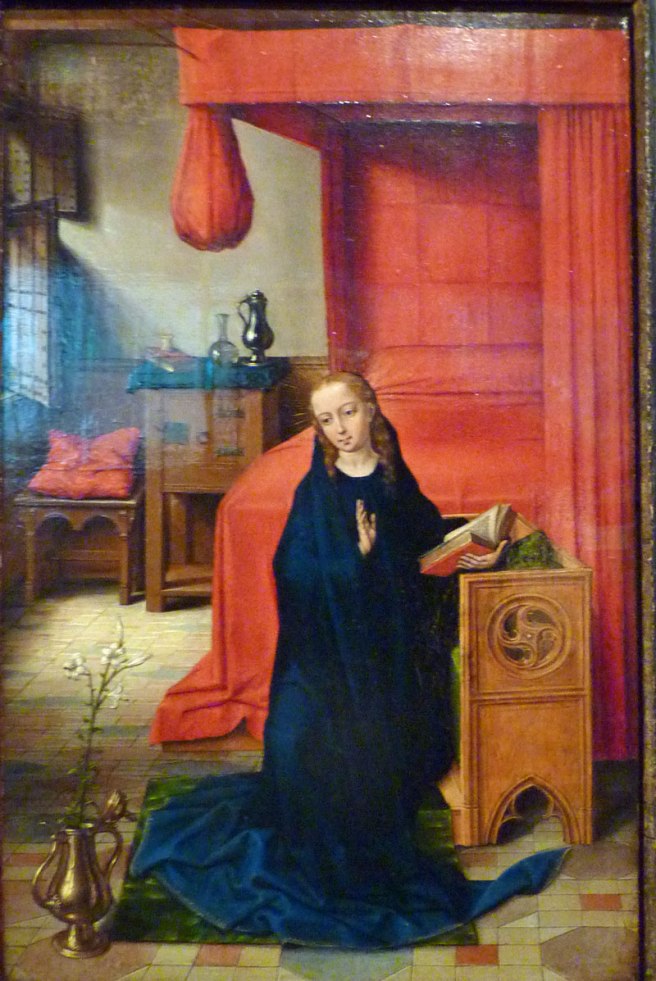In the ancient courts of Asia and the Eastern Roman Empire, people of high status such as emperors or monarchs would have fabric canopies over their thrones as a sign of honour. This allowed the person of importance to be quickly identified in a crowd. This probably developed from very early times when people of importance, such as royalty, would have travelled under a cover to shelter from the elements. The painting below shows the Holy Roman Emperor, Otto III, who lived from 980 to 1002CE, enthroned under a canopy with a cloth of honour behind.

The detail from a painting of the family of Henry VIII, shows him on his throne with a cloth of state which forms both the canopy and the cover behind the throne.

On display in the Burrell Collection there is a very fine example of a canopy made for Queen Elizabeth I, when she visited Sir Roger Wodehouse and his wife Mary Corbet at Kimberly Hall, Norfolk, on the night of 22 August 1578. Called the Kimberley Throne, it would have had a raised platform to place the Queen above ‘ordinary’ level of her subjects.

Kings and Queens along with their court would often go on a ‘Royal Progress’ around their Kingdom to be seen by their subjects. On this occasion, Queen Elizabeth and her Court were on their way from Norwich to Cambridge. The heraldic arms of the Wodehouse and Corbet families is embroidered on the backcloth. The two ‘wildmen’ supporters of the shield of arms are a punning reference to the word ‘wode/wood’ in the name of the owner (‘wild man of the woods’), and these two men carrying clubs also recall, in the fashion of a parody, the classical hero Hercules, who is also usually depicted carrying a club in art. It is probable that this ‘throne’ was made up from hangings which already existed in the Hall, and perhaps originally formed part of an elaborate tester bed. The rich embroidery was professionally worked, and possibly carried out in Italy.
It was a great honour to host the court but the cost could bankrupt a family as there were dozens of people in the court to be entertained and looked after. Hosts would compete to put on better and more lavish hospitality than anyone else.

Although the terms are often used interchangeably, a cloth or portable canopy is properly described as a baldachin. The term baldachin (there are lots of different spellings) derives from the Italian “Baldacco”, referring to a rich embroidered brocade of silk and perhaps even gold, that was mainly sourced from Baghdad. If the canopy is a more permanent structure of wood or stone, such as might be found over a church altar, it is referred to as a ciborium. Ciborium can also refer to the architectural niche in which the statue of a saint is placed, as in the 15th century French or Flemish example from the Burrell Collection above; a limestone niche with a Saint holding a shield.
I’m going to just call them canopies!
As an important symbol of status, canopies are everywhere in Christian art. Reliquaries and other church objects designed to contain objects of great religious significance often also have canopies. For example, the early 16th century German Monstrance (below), made with gilt and engraved copper with champlevé enamelling shown below.

Monstrances were used to display the consecrated Host for the Mass and to carry it in procession. In the Burrell example, the rock-crystal cylinder which would have contained the Host is missing.
Just to compare two examples of the Annunciation; the left wing of a triptych (below) by an artist with the catchy name “Master of the Prado, Adoration of the Magi”, and the Nottingham alabaster (at the bottom) that has been mentioned before. The Nottingham alabaster shows Mary reading her bible (the Old Testament) while kneeling under a canopy. The wing of the triptych is a little different; as Mary is in her bedroom, the artist has used the four-poster bed with the curtains folded into a tear shape exposing the unused bed (alluding to her purity) and creating the effect of a canopy to emphasise her status.


We’ll take a look at canopies in stained glass in the next blog.